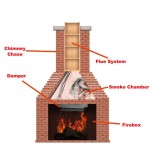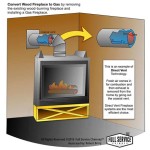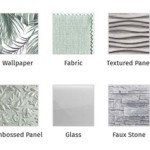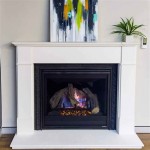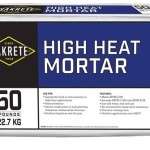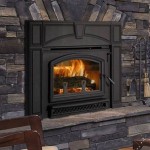Gas Fireplace Logs in Portland, Oregon: A Comprehensive Guide
Portland, Oregon, known for its damp climate and appreciation for cozy living spaces, sees consistent demand for gas fireplaces. A key component of these fireplaces is the log set, which provides the aesthetic appeal of a traditional wood-burning fire while offering the convenience and efficiency of gas. This article provides a comprehensive overview of gas fireplace logs in Portland, Oregon, covering various types, selection criteria, installation considerations, maintenance practices, and relevant regulations.
Types of Gas Fireplace Logs
Gas fireplace logs are not created equal; they vary significantly in material, design, and the type of flame pattern they produce. Understanding these differences is crucial for making an informed purchase.
Ceramic Fiber Logs: These logs are typically the most affordable option. They are made from a lightweight, porous material that heats up quickly. Ceramic fiber logs tend to produce brighter, more yellow flames due to the rapid combustion of the gas. While inexpensive, they may lack the detailed realism of other types and can degrade over time with heavy use.
Refractory Cement Logs: Refractory cement logs are heavier and more durable than ceramic fiber logs. They are made from a dense material that retains heat well, contributing to a more consistent and radiant heat output. These logs often feature more intricate detailing, realistically mimicking the appearance of natural wood. They are generally more expensive than ceramic fiber logs but offer greater longevity and a more authentic aesthetic.
Concrete Logs: Concrete logs represent a premium option in terms of realism and durability. They are crafted from high-density concrete and meticulously painted to replicate the texture and color variations of real wood. Concrete logs are exceptionally durable and provide excellent heat retention. Their higher price point reflects their superior quality and realistic appearance.
Vented vs. Ventless Logs: It is essential to distinguish between vented and ventless gas logs. Vented logs require a functioning chimney or vent to exhaust combustion byproducts. They produce taller, more realistic flames but are less energy-efficient due to the heat loss up the chimney. Ventless logs, on the other hand, do not require a chimney and are designed to burn cleanly, releasing heat directly into the room. Ventless log sets typically include safety features such as oxygen depletion sensors to prevent carbon monoxide buildup. Local regulations in Portland, Oregon, may restrict or prohibit the installation of ventless gas logs; therefore, it is critical to verify compliance with all applicable codes before purchase and installation.
Selecting the Right Gas Fireplace Logs
Choosing the appropriate gas fireplace logs involves considering several key factors, including the size and type of fireplace, desired aesthetic, heating needs, and budget.
Fireplace Size: The dimensions of the fireplace firebox are paramount. Log sets that are too large will not fit properly, potentially obstructing gas flow and affecting combustion efficiency. Log sets that are too small will not provide adequate visual coverage, diminishing the aesthetic impact. Measure the firebox width, depth, and height to ensure compatibility with the selected log set. Manufacturers typically provide recommended fireplace dimensions for their log sets.
Gas Type: Gas fireplaces are designed to operate with either natural gas or propane. It is crucial to select a log set that is compatible with the type of gas supply available in the property. Using the incorrect log set with the wrong gas type can result in inefficient combustion, safety hazards, and damage to the fireplace system. Ensure the log set is explicitly labeled for use with the intended gas.
Heat Output: Consider the desired level of heat output. Vented logs generally provide less heat than ventless logs due to heat loss through the chimney. Refractory cement and concrete logs tend to radiate more heat than ceramic fiber logs due to their higher heat retention properties. Assess the heating needs of the space and choose a log set that provides adequate warmth without overheating.
Aesthetic Preferences: The aesthetic appeal of the log set is a subjective but important consideration. Different log sets offer varying degrees of realism, flame patterns, and finishes. Examine the detailing, color variations, and overall appearance of the logs to ensure they complement the style of the room and create the desired ambiance. Consider visiting a showroom to view different log sets in person before making a purchase.
Budget: Gas fireplace logs range in price from relatively inexpensive ceramic fiber sets to premium concrete sets. Establish a budget before beginning the selection process and prioritize features and qualities that are most important. Remember that a higher initial investment in a more durable and realistic log set may provide better long-term value than a cheaper, less durable option.
Installation and Maintenance of Gas Fireplace Logs
Proper installation and regular maintenance are essential for ensuring the safe and efficient operation of gas fireplace logs. Incorrect installation can lead to gas leaks, carbon monoxide poisoning, and fire hazards.
Professional Installation Recommended: While some homeowners may attempt to install gas fireplace logs themselves, professional installation is highly recommended, especially for homeowners unfamiliar with gas line connections and fireplace systems. A qualified technician can ensure the logs are properly positioned, the gas connections are secure, and the fireplace is functioning safely and efficiently. Professional installation also provides peace of mind and minimizes the risk of errors that could lead to safety issues.
Placement of Logs: The placement of the logs is critical for proper combustion. Follow the manufacturer's instructions carefully when arranging the logs. Avoid obstructing the pilot light or gas burner. Ensure adequate airflow around the logs to prevent carbon monoxide buildup. Incorrect log placement can result in incomplete combustion, producing harmful gases and reducing the heat output of the fireplace.
Regular Cleaning: Periodically clean the gas fireplace logs to remove dust, soot, and debris. Use a soft brush or vacuum cleaner with a brush attachment to gently clean the logs. Avoid using harsh chemicals or abrasive cleaners, as these can damage the log material. Cleaning the logs improves their appearance and helps maintain optimal combustion efficiency.
Pilot Light Maintenance: Check the pilot light regularly to ensure it is burning consistently. A weak or flickering pilot light may indicate a problem with the gas supply or the pilot light assembly. Refer to the fireplace manufacturer's instructions for troubleshooting pilot light issues. If the pilot light frequently extinguishes, consult a qualified technician for assistance.
Annual Inspection: Schedule an annual inspection of the gas fireplace by a qualified technician. The technician can inspect the gas lines, burner assembly, venting system (if applicable), and safety features to ensure everything is functioning properly. An annual inspection can identify potential problems before they become serious safety hazards.
Carbon Monoxide Detectors: It is essential to have working carbon monoxide detectors installed in the home, particularly near the gas fireplace. Carbon monoxide is a colorless, odorless, and deadly gas that can be produced by incomplete combustion in gas appliances. Carbon monoxide detectors provide an early warning of dangerous levels of the gas, allowing occupants to evacuate the premises and seek medical attention. Test the carbon monoxide detectors regularly to ensure they are functioning correctly.
Local Codes and Regulations: Portland, Oregon, has specific building codes and regulations pertaining to the installation and operation of gas fireplaces. These regulations may address venting requirements, gas line connections, safety features, and permit requirements. Before installing a gas fireplace or replacing gas fireplace logs, consult with the City of Portland Bureau of Development Services to ensure compliance with all applicable codes and regulations. Failure to comply with local codes can result in fines and the requirement to correct any violations.
By understanding the different types of gas fireplace logs available, carefully selecting the right logs for the fireplace and aesthetic preferences, and adhering to proper installation and maintenance practices, homeowners in Portland, Oregon, can enjoy the warmth and ambiance of a gas fireplace safely and efficiently.

Gas Fireplace Log Sets Portland Or Nw Natural Appliance Center

Hargrove Gas Logs Portland Or Nw Natural Appliance Center

All About Gas Logs Portland Or American Chimney

Rh Peterson Coastal Driftwood Gas Logs Nw Natural Appliance Oregon

Indoor Outdoor Gas Fireplaces Portland Or Nw Natural Appliances

Gas Fireplace Inserts Portland Or Nw Natural Appliance Center

Benefits Of Natural Gas Fireplaces Nw Appliances

Gas Fireplace Inserts Portland Kozy Heat Chaska Nw Natural

Fireplaces Smith May Inc

Fireplaces Portland Kozy Heat Chaska Gas Fireplace Nw Natural
Related Posts

